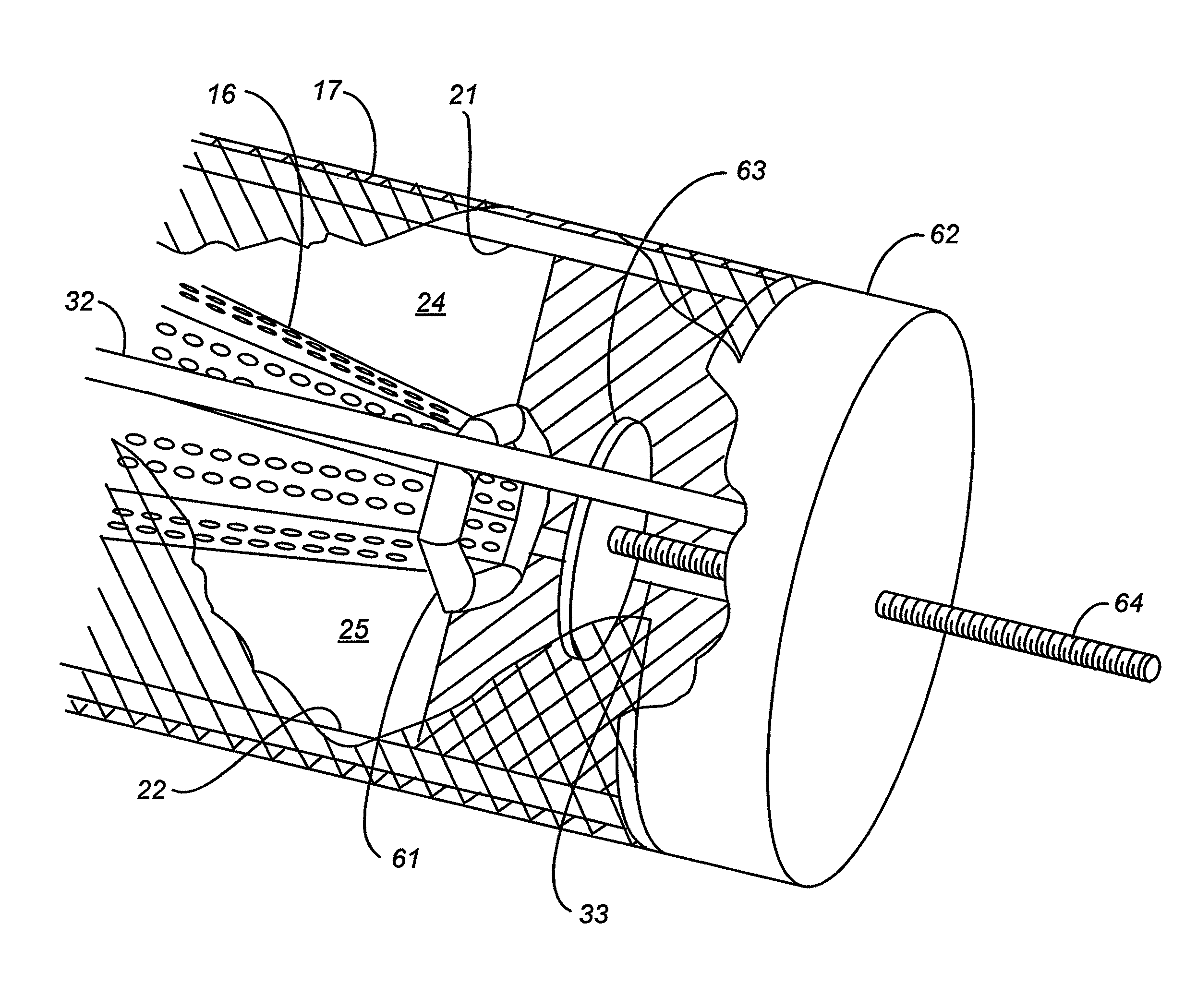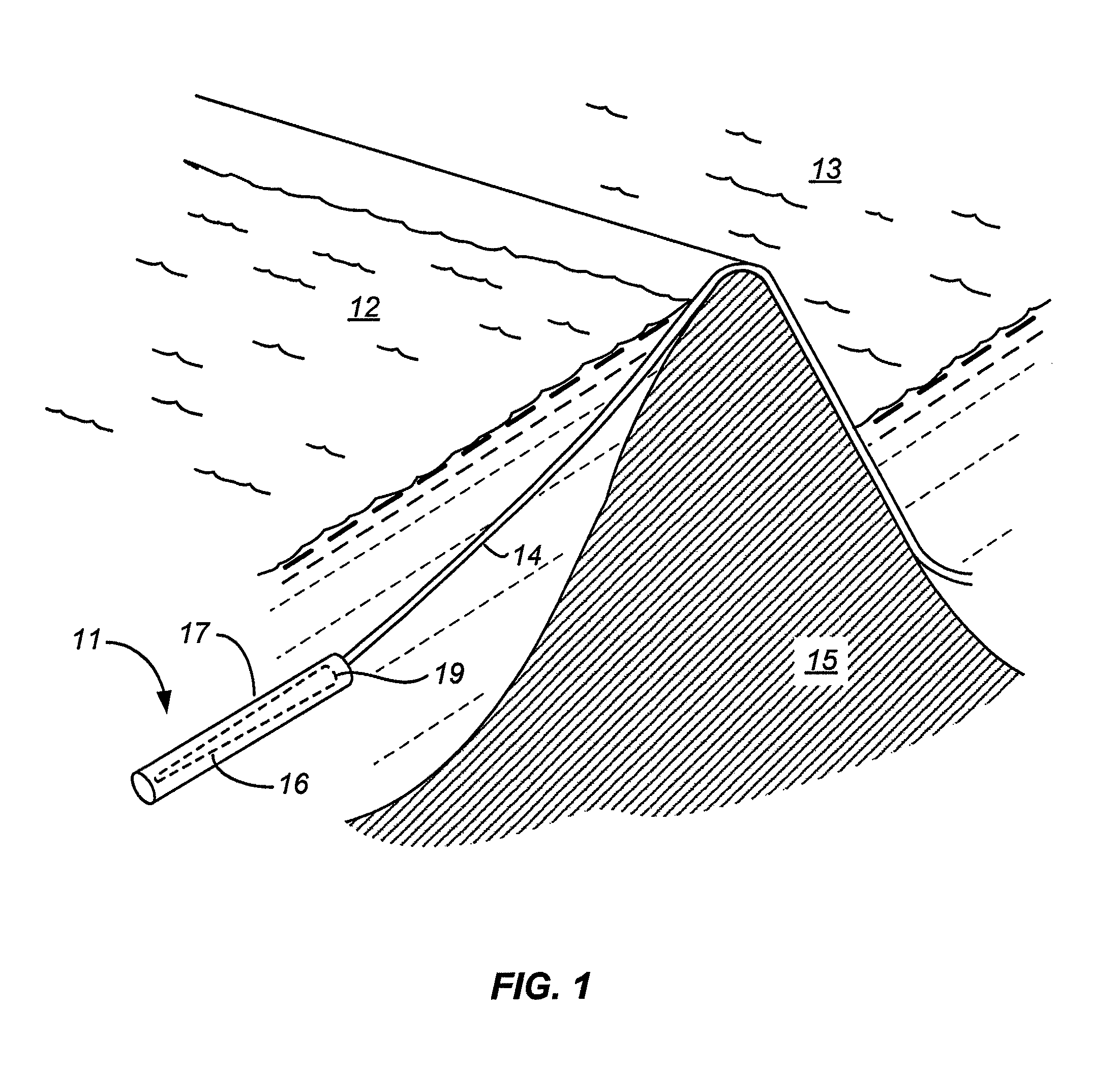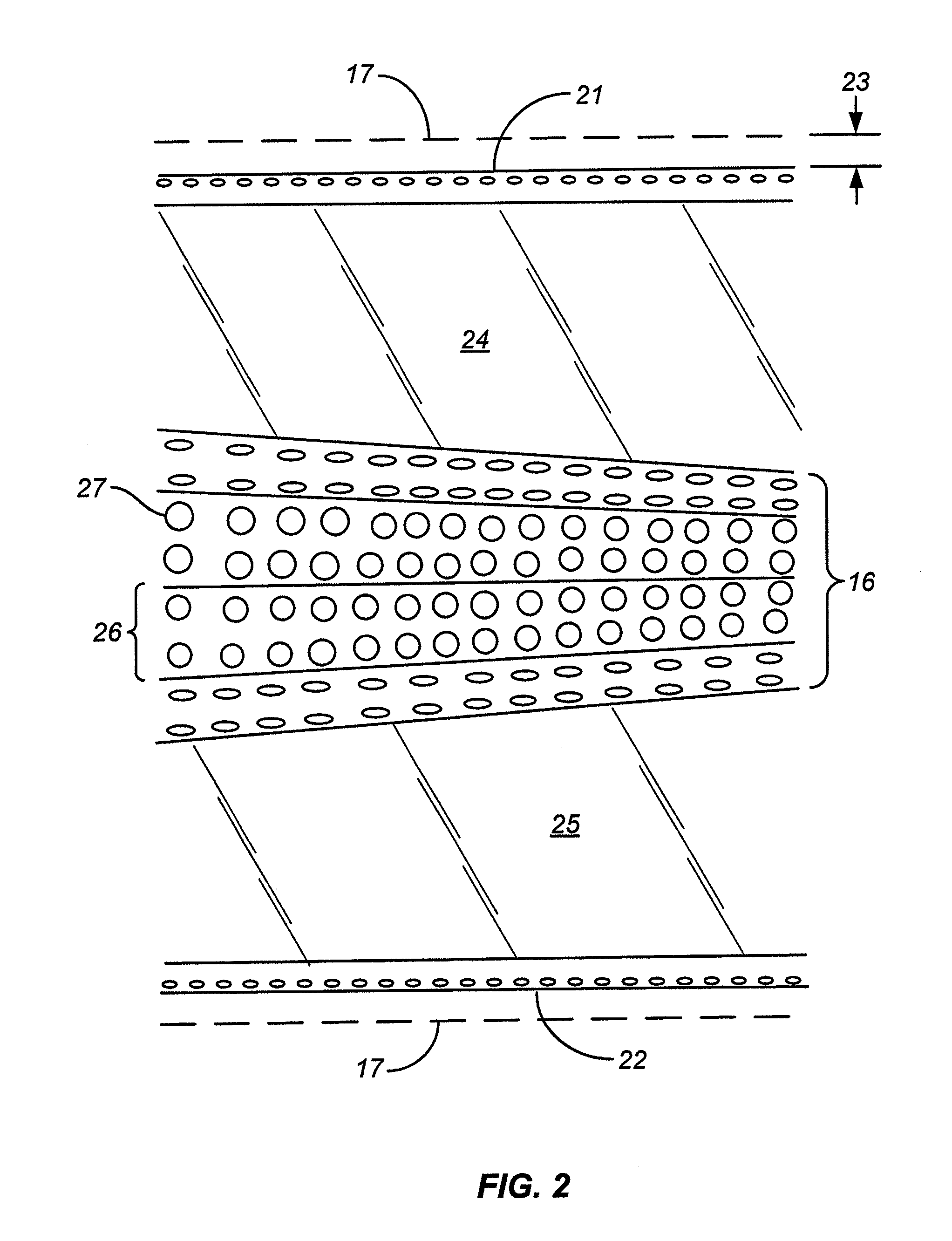Barrel-type fish/particle screen with adjustable flow distribution and debris removal
a filter screen and filter screen technology, applied in the field of filter screen, can solve the problems of inflow non-uniformity, and achieve the effects of reducing or avoiding harm to aquatic life, reducing air pollution, and reducing water pollution
- Summary
- Abstract
- Description
- Claims
- Application Information
AI Technical Summary
Benefits of technology
Problems solved by technology
Method used
Image
Examples
Embodiment Construction
[0018]The cylindrical screen that forms the outer portion of the fish screens addressed herein is referred to herein as a foraminous cylindrical shell. The word “shell” denotes that the screen is the outermost component of the apparatus and surrounds the inner components including the collection manifold. The term “cylindrical” is used to denote that the shell is a lateral enclosure with a longitudinal axis and a substantially uniform cross section along the length of the axis. The term is intended to include enclosures whose cross section is a circle (circular cylinders) as well as those whose cross section is a closed curve other than a circle, such as an ellipse, and those whose cross section is a polygon, such as a hexagon or an octagon. In most implementations of this invention, the cylindrical shell will have a generally circular cross section. The term “foraminous” is used herein to denote a sheet that has openings distributed over its surface. Examples of foraminous material...
PUM
| Property | Measurement | Unit |
|---|---|---|
| acute angle | aaaaa | aaaaa |
| acute angle | aaaaa | aaaaa |
| length | aaaaa | aaaaa |
Abstract
Description
Claims
Application Information
 Login to View More
Login to View More - R&D
- Intellectual Property
- Life Sciences
- Materials
- Tech Scout
- Unparalleled Data Quality
- Higher Quality Content
- 60% Fewer Hallucinations
Browse by: Latest US Patents, China's latest patents, Technical Efficacy Thesaurus, Application Domain, Technology Topic, Popular Technical Reports.
© 2025 PatSnap. All rights reserved.Legal|Privacy policy|Modern Slavery Act Transparency Statement|Sitemap|About US| Contact US: help@patsnap.com



